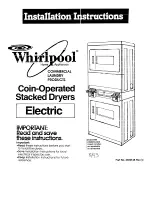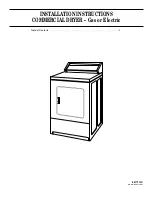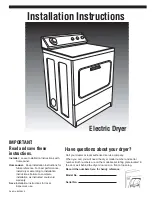
GEK-34054
MEC HANICAL INSPECTION
l.
Ther e s hould be n o noticea ble fr iction when the dis k is
r otated s lowly clockwis e.
The dis k s hould r eturn by its elf
to its r es t pos ition .
2.
Ma ke s ur e the
contr ol
spr in g is
n ot defor med,
n or
its
con volutions ta ngled or touching.
3 .
The a r ma tur e a n d con ta cts of the s ea l-in unit, a s well a s the
a rmature and contacts of the ins ta n ta n eous unit, s hould move
freely when operated by ha nd; ther e s hould be at lea s t 1/32"
wipe on the s ea l-in con tacts .
4.
The ta r gets in the sea l-in un it and in the ins ta n ta neous unit
mus t come into view and latch when the a r ma tur es a r e oper a ted
by ha nd, and s hould unlatch when the ta r get-relea s e lever is
opera ted.
5.
Make sur e tha t the finger s and s hor ting ba r s agr ee with the
internal-con nections diagr a m.
CAUTION
Every circuit in the drawout case has an auxiliary brush.
It is especially important on current circuits and other
circuits with shorting bars that the auxiliary brush be bent
high
enough
to
engage
the connecting
plug
or test
plug
before the main brushes do.
This will prevent CT (Current
Transformer) secondary circuits from being opened.
ELECTRICAL TESTS
DRAWOUT RELAYS, GENE RAL
Since a ll drawout r elays in service oper a te in their ca s es , it is
recommended that they be tes ted in their cas es or a n equiva lent s teel
case.
In this way, any magnetic effects of the enclosure will be
accura tely duplicated during testing.
A r elay may be tested without
removing it from the panel by us ing a l2XL A13A tes t plug.
T his plug
makes
conne
c
t
ion
s
o
n
l
y
with
the
r elay,
a n d does not dis turb a n y
s hor ting ba r s in the cas e.
The l2XLA12 A tes t plug may a ls o
be
us ed.
Although
this
tes t
plug allows
greater
testing flex ibility,
it
requires C.T.
shor ting jumpers and the ex ercis e of gr eater ca r e,
s ince conn ections
a r e ma de to both the relay and the exter nal
circuitry.
POWER RE QUIRE MENTS, GENERAL
All devices oper a ting on alter na ting cur rent (AC ) a re a ffected by
fr equency.
Since n on - s inus oidal wavefor ms can be analyzed a s a
fun da menta l fr equency plus ha r mon ics of tha t fun da men tal f r equen cy,
it follows tha t a lterna ting-curr ent devices ( r elays ) will be a ffected
by a pplied wavefor ms.
AC r ela ys
(a nd AC devices in gen er a l ) a r e
11
www
. ElectricalPartManuals
. com












































